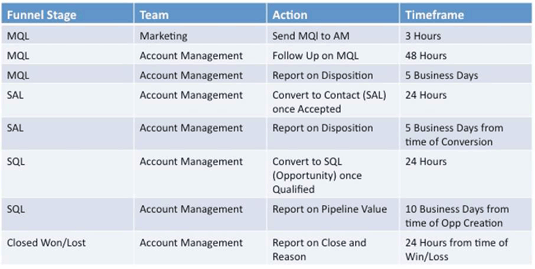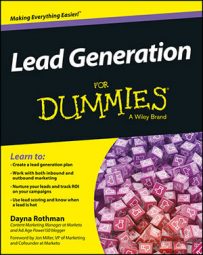Alignment between sales and marketing during the lead generation process is critical for success. The two teams have an extremely symbiotic relationship, and companies that understand this are ahead of the game. Traditionally, sales and marketing haven't had the greatest relationship with one another. Sales thinks marketing doesn’t give them good leads, and marketing thinks sales doesn’t follow up on its perfectly good leads. That's just the tip of the iceberg. For many organizations, sales and marketing just don’t speak the same language.
This lack of alignment can be detrimental to the success of both sales and marketing. Therefore, it is really important to work on creating a strong relationship that benefits both parties.
For lead generation specifically, alignment becomes critical as marketing relies on sales for its programs to be a success. No matter how fantastic your lead generation programs might be, if sales doesn’t call your leads, none of them will turn into customers. Good alignment creates happy marketers, happy sales teams, and happy customers overall. Without good alignment, everyone loses in the end.
For alignment to occur, eliminate the blame game and start working toward considering both sales and marketing as one team. This is tough, but by consistent communication, service-level agreements (SLAs), and an understanding between the two teams, sales and marketing alignment can happen.
Craft a sales and marketing workshop
The first step to communication and common definitions is a joint sales and marketing workshop. It's a critical step to aligning the sales and marketing function, which is absolutely necessary for successful lead generation strategies.
You also want to inject some team camaraderie into your sales and marketing alignment workshop, so schedule a full day, with half of the time dedicated to a team-building activity like a barbecue or bowling — something to align your marketers and sales executives in a more casual environment.
During the first half of your workshop, you need to address the following needs:
Come up with shared definitions for leads, opportunities, qualified leads, and so on.
Come up with a clear profile of buyers and customers.
Determine what technology you need/have to enable a closed-loop lead generation solution.
Determine how to hold your teams accountable.
Figure out what type and frequency of communication you need to be successful.
Also make sure you are informing your sales team of your lead generation strategy and plans. Consider using your stakeholder presentation deck and updating it to be applicable to your sales team. The sales team also needs to know the definition of lead generation, what channels you intend on being active on, and how your success is measured. Also let them know what you expect from them throughout the process.
Manage your service-level agreements
One of the most important items you need to create during your sales and marketing alignment meeting is your service-level agreements (SLAs). This is where you can put some muscle behind your alignment. Both sales and marketing need some reassurance that there is a formal system in place.
In the past, SLAs were typically used in technical support, where tickets prioritized, followed up on, and escalated in case a technical support associate did not follow up on the issue in the allotted time. This technique has become increasingly popular in the sales and marketing world to prevent either team from dropping the ball.
The easiest way to keep track of these SLAs is in a customer relationship management (CRM) system or a marketing automation tool because you need a way to determine when a lead gets passed from marketing to sales and when that lead has received a follow-up call.
After you have that agreed-upon criteria between sales and marketing on the definition of a good lead, you can use the SLA process to ensure that marketing isn’t wasting the sales team’s time with poor leads, and you can ensure that sales follows up with marketing’s leads in an agreed-upon amount of time. And because you are tracking it in a CRM or marketing automation tool, there is tangible proof of what exactly is going on.
SLAs are a great way to get very specific about your various needs, requirements, and expectations. When you draft your SLA, make sure you include the following sections:
Summary: A brief explanation of what your SLA is and why it is being implemented.
Common terminology and definitions: List all common terminology and definitions. Examples are: Sales Qualified Lead, Marketing Qualified Lead, Sales Accepted Lead, and so on, in addition to any metrics and measurements that need to be defined.
Marketing accountability: What SLAs have you put in place for marketing? This may include lead quality, lead quantity, and so on.
Sales accountability: What SLAs have you put in place for sales? This usually aligns to follow-up timing, but could also include mandatory data fields in your CRM tool (what a sales rep has to put into your CRM after she has a call with the lead), minimum close ratios of marketing leads, and so on.
Plan of action: What steps are needed in place to get this done? How often are your groups communicating and when? What is to be covered in the meetings?
Make your SLA easily accessible via Google Drive, Box, Dropbox, or your CRM tool. Take a look at the following figure to see a sample of a sales and marketing SLA developed by Carlos Hidalgo, the CEO of ANNUITAS.


